There’s a familiar refrain with the Audi A2, Ingolstadt’s millennial entrant into the competitive supermini sector: The A2 was, according to nearly everyone, “ahead of its time”.
For a while I’d have agreed with it, but if the A2 truly was ahead of its time, then surely by now we’d have seen a few more cars like it. But park an A2 alongside the modern crop of small cars and it looks like the odd one out, rather than the inspiration. No modern supermini is particularly notable for its aerodynamics, its light weight, or for having an unusually spacious and well-constructed cabin.

Several are tall-ish, though. That’s not because the supermini class has adopted an A2-style (or original Mercedes A-class-style) monovolume shape, but because customers – apparently – now demand an extra few inches of ride height and some plastic cladding on their superminis, creating the rapidly-growing compact crossover market.
In other words, the Nissan Juke has been more influential in today’s small-car market more than the A2 has. So what went wrong?
And then there was light
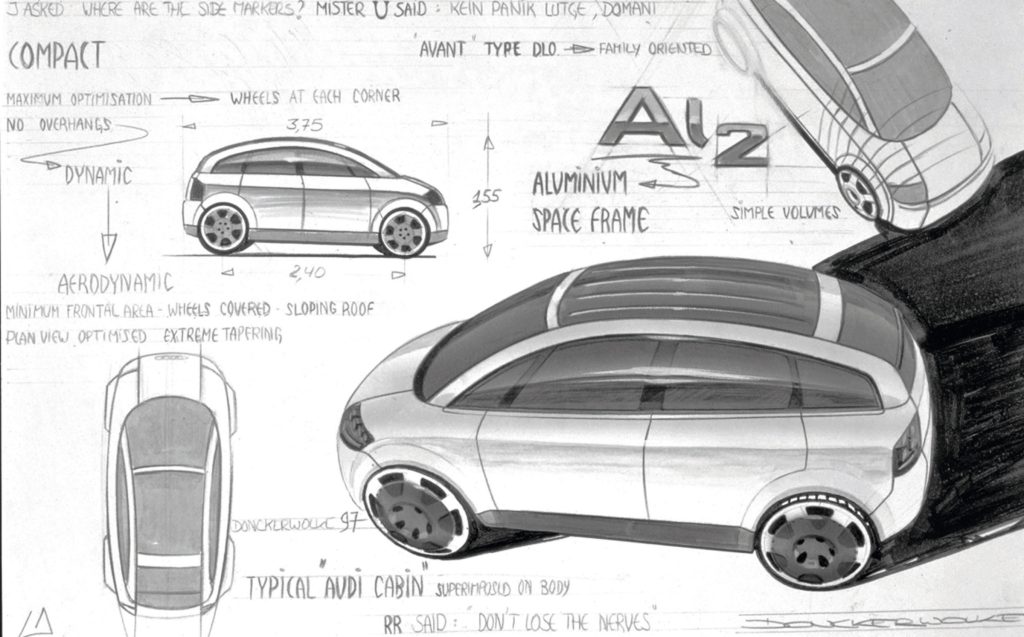
The late 1990s was an embarrassment of riches in the small car market. The decade had started with the Renault Twingo‘s friendly face and bold colourways, but it ended with the Ford Ka, A-class, Smart Fortwo, the new Mini, and of course the A2 – not to mention an explosion of the things from the far east, led by the likes of Yaris, Sirion and Matiz.
There were still boundaries to push with small cars at the time, still improvements to be made in refinement, quality, packaging and technology. Audi arguably pushed the boundaries furthest of all when it previewed in the AL2 concept at the Frankfurt motor show in 1997. It revealed a pair that year in fact, one called the “Open End” with no roof, the other more conventional, but both used an aluminium structure, with Audi claiming a production model could nip in at just 750kg – in retrospect somewhat optimistic, given even the sparkly show car, with no commitment to realism, was 810kg.
The concept used a 1.2-litre, 15-valve three-cylinder petrol engine with direct injection, and was decorated with translucent mint green accents and a matching full-length sunroof, echoing a contemporary trend for translucent consumer goods seen in everything from cameras to Game Boys. This was also the year, of course, that Apple introduced the iconic Power Macintosh G3; the AL2 looked for all the world like a wheeled Mac.
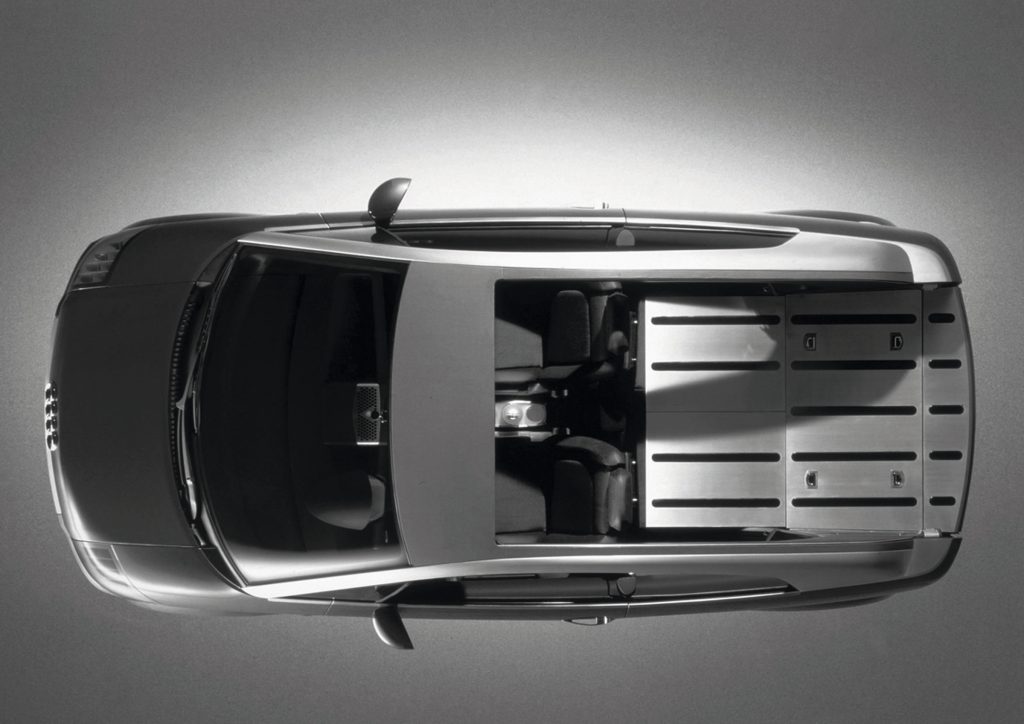
Admirably, much of the AL2’s basic ideas, and indeed its shape (but not its fruitier cues), made it through to production. Audi had introduced aluminium spaceframe construction with the A8 (though it wasn’t the first all-alloy car: Honda’s NSX was), but this was aluminium for the mass market – the Neckarsulm plant (formerly NSU, then used to build Porsche 924s and 944s, today Audi’s larger cars) had the capacity for 60,000 A2s per year, a volume unlike any alloy car before it.
Audi cited several benefits to aluminium construction, such as its resistance to corrosion and easy recyclability, but one of the most significant was weight. In the end, the production car started at 895kg. As Russell Bulgin pointed out in his preview of the car in Car‘s February 2000 issue, this was not especially light for the supermini class, at least in standard form. But it was still spry given its space and utility – an equivalent 1.4-litre A-class creaked the scales at 970kg despite significantly lower perceived quality.
Its tall shape evoked both 1998’s TT and the C5-generation A6 launched in 1997, but this was tall for utility as well as style, just as it was with the A-class. The contrast with a conventional supermini was stark: While the 3826mm A2 was 7mm shorter than a Fiesta, and therefore just as much of a doddle to park, it was 219mm taller than the 1334mm Ford.
This meant you could actually fit adults in every seat, whereas the Fiesta’s rear seats – as confirmed to me by the friends I squeezed into mine in the mid-2000s – were less generous. Audi’s secret was not just that the A2’s roof was high, but its footwells low too; the rear ones were sunk into the structure, in something Audi called its ‘space floor concept’. That meant plenty of room for legs and feet, and a decent boot to boot.
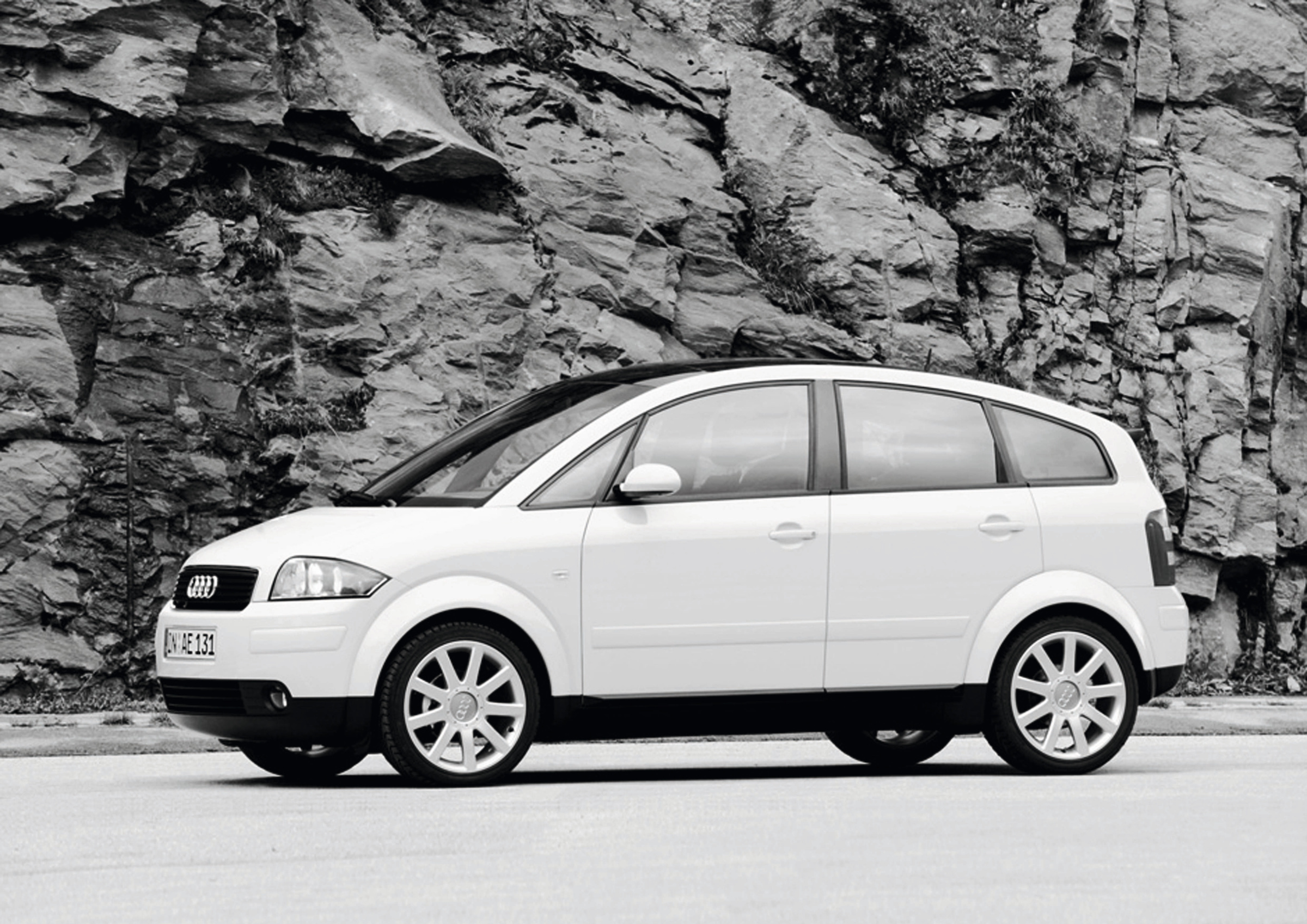
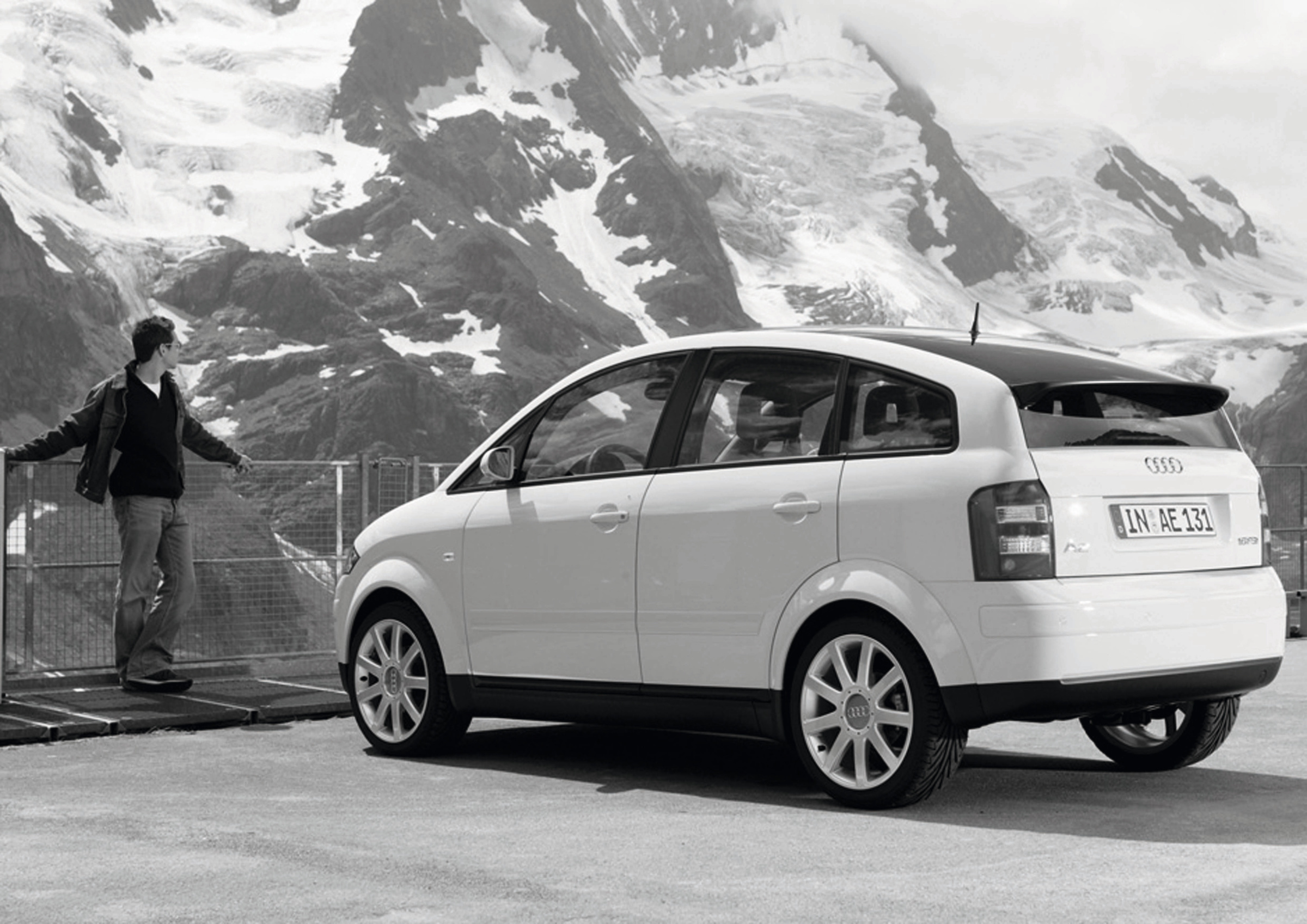
Tall didn’t mean blunt either, the A2’s smooth, TT-adjacent styling offering up a drag coefficient of only 0.28 where a plebeian supermini was in the threes. Typical Ingolstadt aero-hacks were used in abundance: minimal external jewellery, flush-fitting glass, razor-thin panel gaps, and a clever spoiler on the tailgate to reduce turbulence. It employed a feature you really could call ahead of its time too, given most electric cars now have one: a faux grille, which, given the bonnet was effectively sealed, also acted as a flap for topping up and checking fluids.
And what do light weight and good aerodynamics mean, all other things being equal? Efficiency. The AL2’s 1.2-litre direct injection petrol never materialised, but Audi claimed around 46mpg from the more conventional 1.4-litre, four-cylinder petrol at launch (more impressive in 2000 than it sounds today) and more than 67mpg for the 1.4 turbodiesel. The latter does still sound impressive today, and owners often achieve it, and more. We achieved it, for that matter, but more on that in a bit.
Into this mix, but not sold in the UK, Audi stirred an even more specialised A2 called the 3L. With Little Tykes-spec 145-section tyres, a special 1.2-litre three-cylinder turbodiesel, an automated manual ‘box, even more aero tweaks, lightweight parts, and a bunch of equipment left back at the factory, it was absurdly frugal. The name, you see, stands for 3 litres of fuel per 100km, or 94mpg. Only Volkswagen’s identically-engined Lupo 3L, the Honda Insight, and diesel variants of the Smart got close.
Light fantastic?
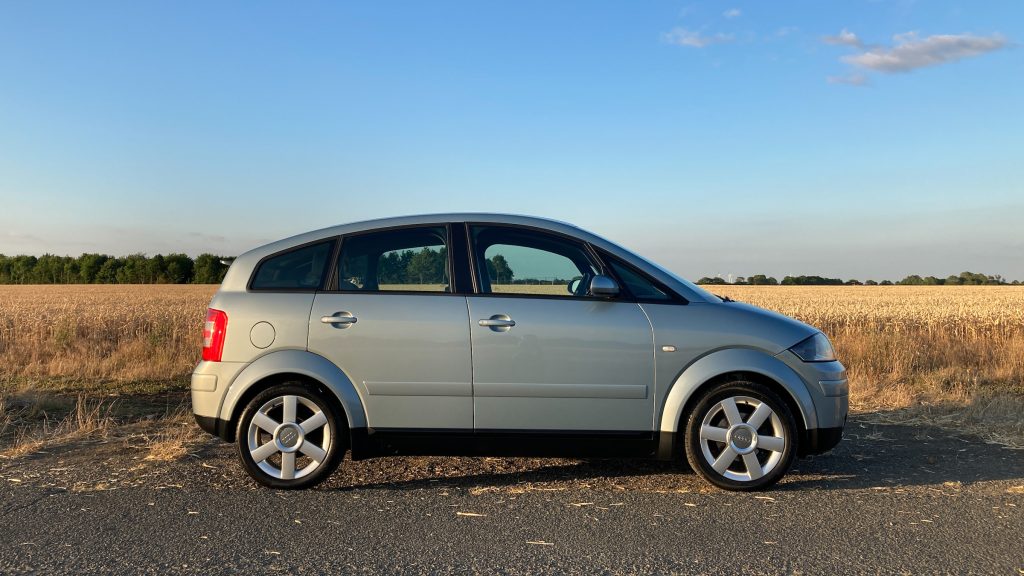
Audi UK does have a 3L on its heritage fleet, but the car we’re in today is a later 1.4 TDI. Early models packed 74bhp from a turbocharged, single overhead cam, inline three diesel, but in 2003 Audi bumped that up to 89bhp and a hefty 170lb ft of torque from only 1900rpm. The result was 0-60 in just under 11sec, more than a second and a half quicker than the 74bhp car, but no penalty in economy. Win-win.
The A2’s shape is apparently still as polarising as it was two decades ago. Mention it on social media and while you’ll find plenty of supporters, you won’t have to wait long for the people who just don’t get it.
I’m not one of them: the A2 is a delight both from afar, where it looks both contemporary and as distinctive as the original TT, and up close, where paint finish and panel fit would stand scrutiny alongside anything in the B-segment today.
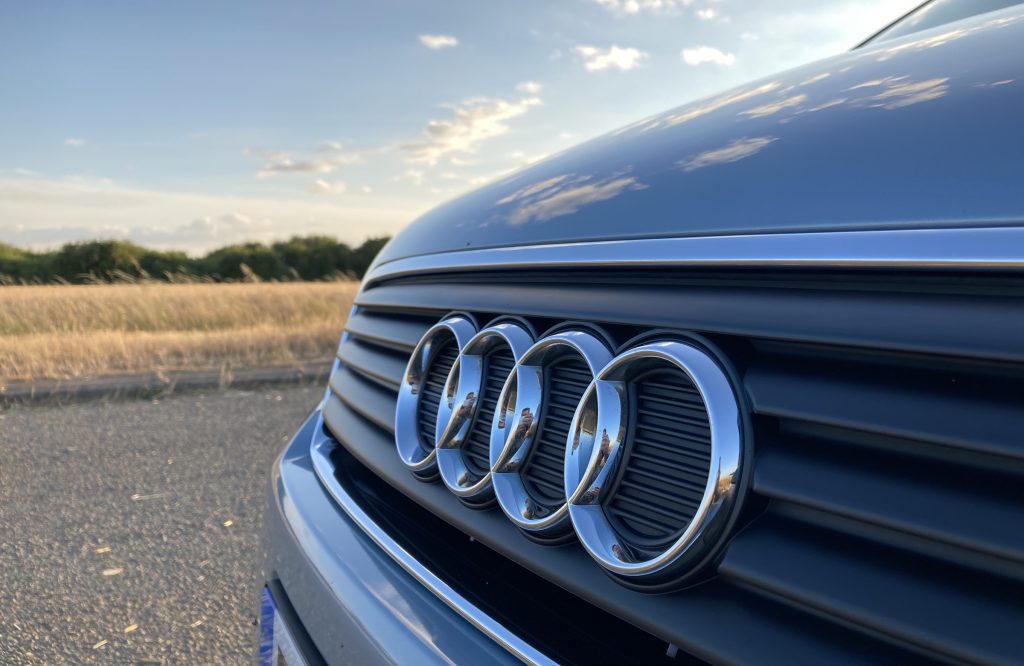
Like many lightweight cars – from the Lotus Elise to the Smart Roadster and the modern Alpine A110 – swinging open the door is initially startling, with so little heft behind it. But close it again and the quality’s obviously there: it thunks, rather than clatters. The smaller back door is even lighter, but park yourself back there for a moment and that ‘space floor concept’ really works: the A2 is light and airy, but also genuinely spacious thanks to that deep trough for the cloddiest of hoppers.
Those in the front get the best deal though. Thick, raked A-pillars don’t seem to greatly impede your view out, but the large screen and deep side windows give you plenty back. The four-spoke wheel, common to A4s and A6s of the day, endows your primary touch point with a quality feel, and the straightforward, logical dash, if not especially interesting to gaze upon, at least feels the part. At night, the large, backlit dials are tasteful and legible like no modern TFT alternative.
Three-pot diesels can grumble, but I shouldn’t have worried. The starter sounds like it could fire up a cruise ship but while there are obviously three cylinders cheerfully chuntering away somewhere up front, it could only be considered vocal alongside the most muted of modern Corsas, Clios and Polos. At a cruise it’s near inaudible.



And one potentially meaningful complaint about this car’s stingy equipment levels – there’s no air conditioning, and I have the car during the hottest week since 1976 – is undone somewhat by the way genuinely cool air filters into the car both through the vents and through the open side windows. If it was deliberate (and this is 1990s Audi we’re talking about, so it almost certainly is) there’s a team of aerodynamicists who should be very proud of that.
With a chilled breeze and minimal racket (slick aero means little wind roar, as well as well-insulated engine noise) the early miles pass very comfortably indeed. The upright driving position is another stress-dissipating feature, as is clear visibility. The ride on these 16-inch wheels, criticised in contemporary road tests, is perfectly manageable by 2020s standards. Steering, praised in reviews as about the best Audi had yet achieved in a car, is light and accurate, and while front struts and a rear torsion beam isn’t the most sophisticated combo, it’s enough to let the A2 dart around as a small car should. Even at 960kg for this diesel, the chassis is hardly troubled by flab.
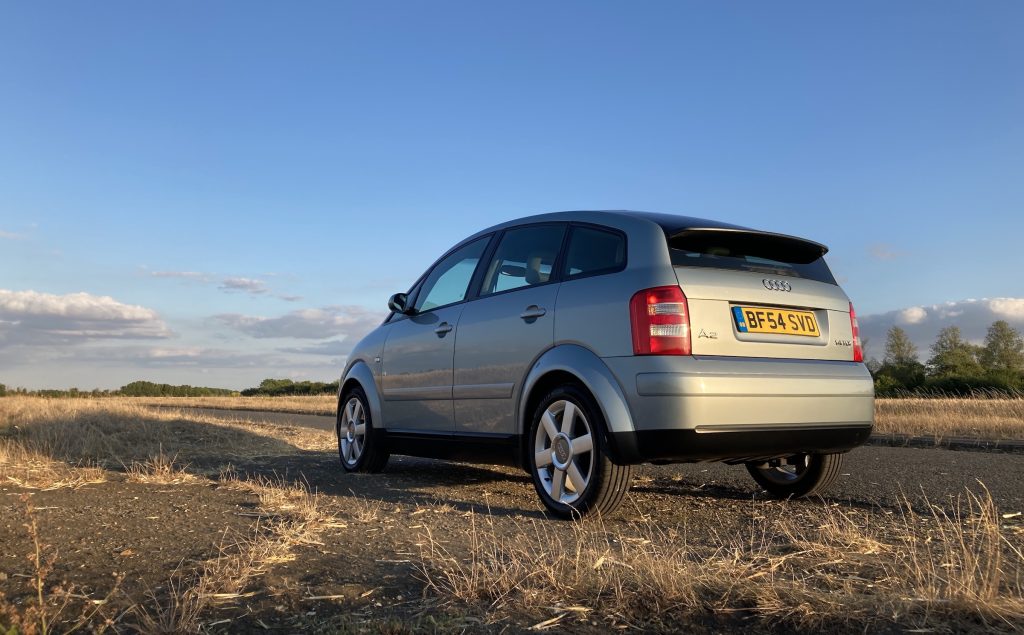
The engine is making light work of things too. In fact, it seems to be in its element at higher speeds. Accelerating from a halt you do of course get some three-cylinder diesel grumble. It’s unavoidable, really, and a narrow diesel powerband means you’re busy with the first few gears.
But out on the open road the gearing’s long legs (70mph is a touch over 2100rpm in top) and the 1.4’s healthy twist (well into its peak by that point) mean the A2 is well into its stride on the motorway. While wind resistance might start taking over on some other cars of this size, the Audi seems to gather another 10-20mph before you need to consciously squeeze the accelerator harder to overcome it.
It’s got long legs in other ways too. Range, for instance. With best intentions, I’d planned out a few days of decent journeys, ready to top up the A2’s tank, jot down the figures, and go all over again, but by the time the man from Audi took it away, there was still a quarter left in its tank. Assuming the needle doesn’t simply plummet from that point, our rough guess for those first three quarters is around 70mpg – or roughly what Audi claimed. This is a car designed in the 1990s that would give an EV the willies at current electricity prices.
When the lights go out
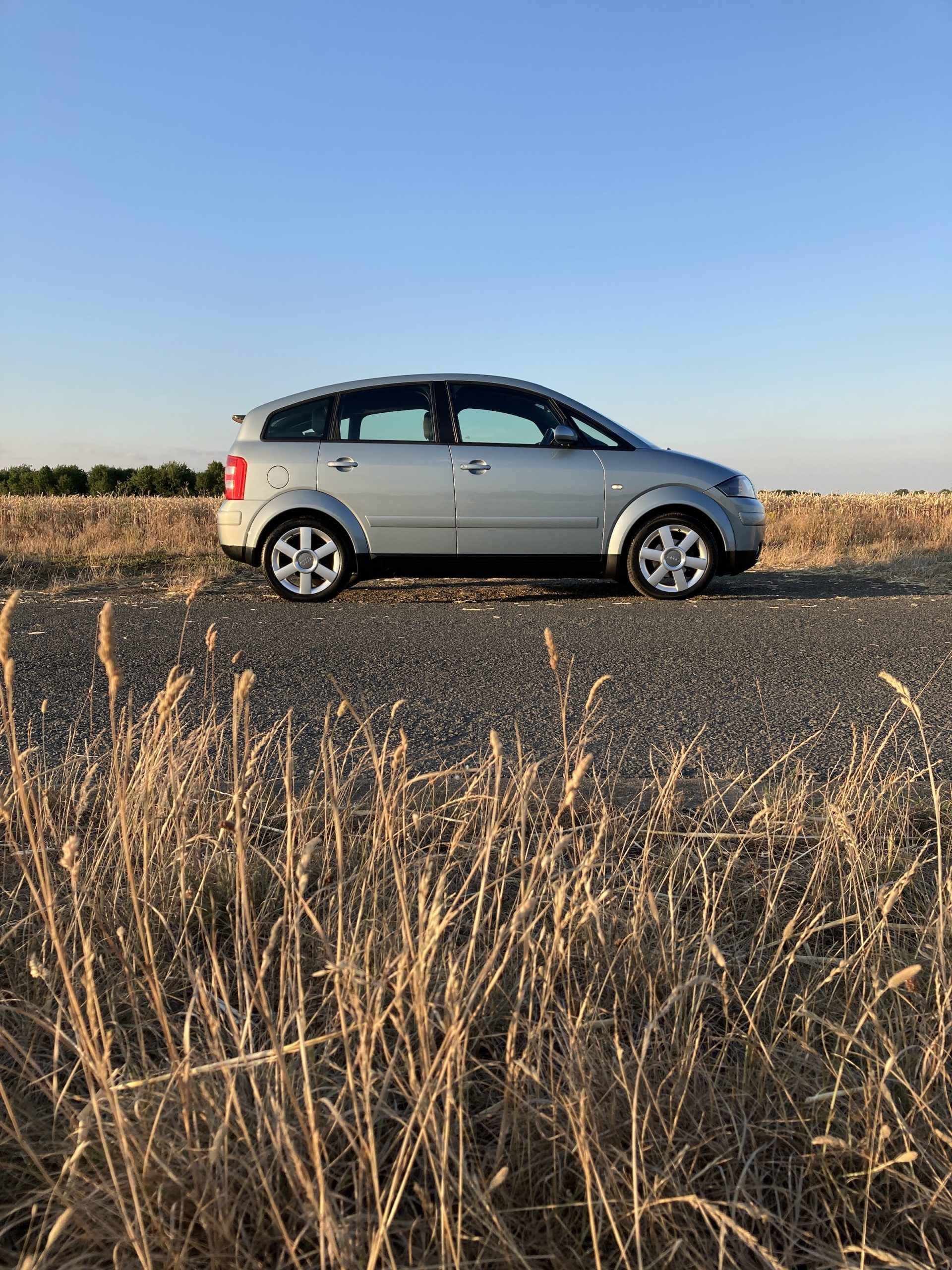
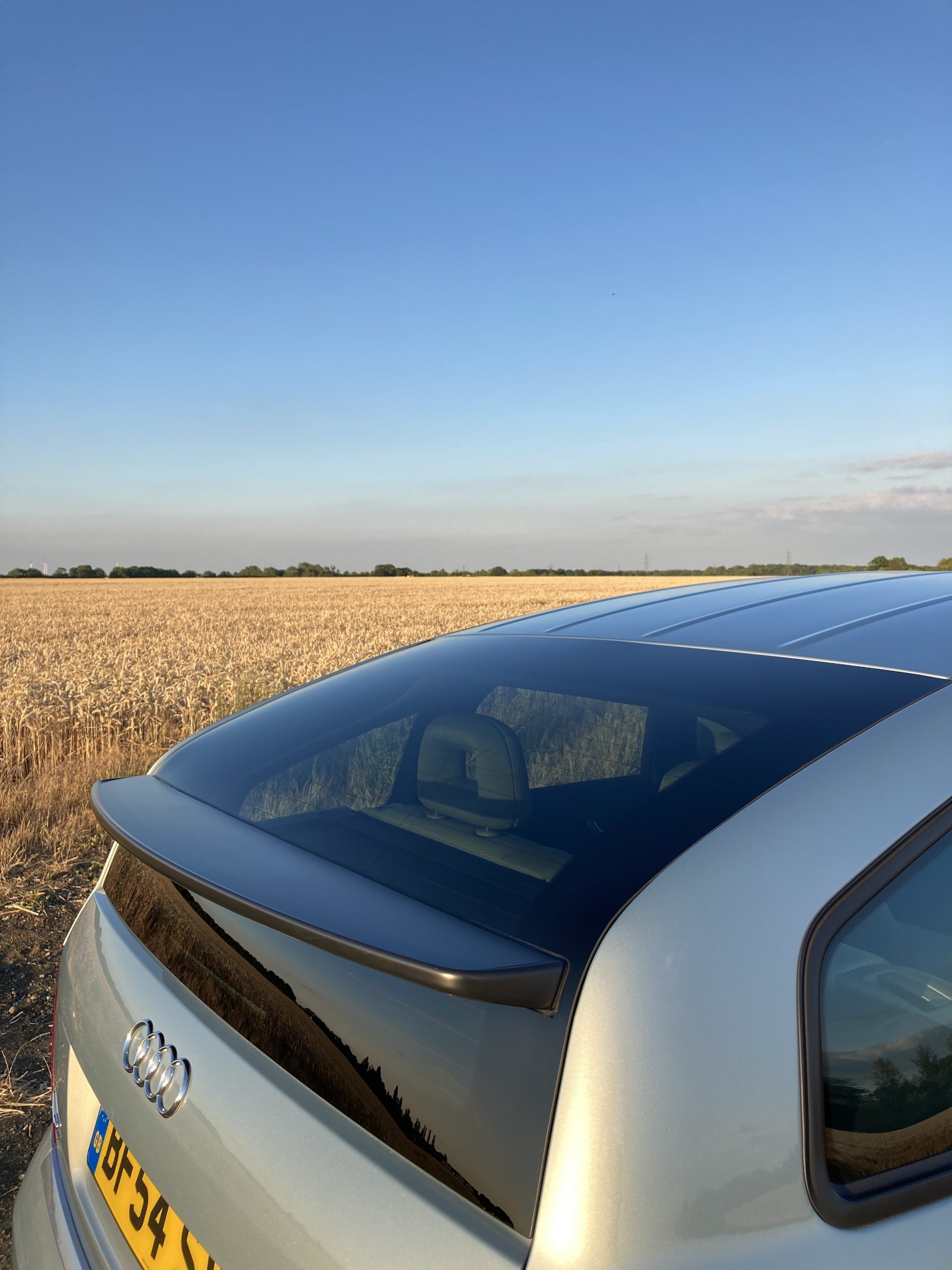
Audi nailed the A2, at least in concept. The car it designed to be spacious, high quality, and efficient, is all those things and more. So why are the roads not full of them?
The first problem is – well, was – price. An A2 was a £13,150 car in 2001 (£16,600 for the 74bhp version of the 1.4 TDI we have here). In 2022 money that’s around £20,000, which doesn’t seem excessive when a Fiesta starts at £18,600, but was less palatable when under twelve grand could have suburban curtains twitching with an oh-so-fashionable Mini. Like the Mini, A2s are fabulous value today though, with perfectly decent cars abundant in the £2000 range.
The other is that the market just went in a different direction. People weren’t keen on paying big money for aerodynamic nerdery; they were much happier spending it on style instead. Similar money to the A2 could also, notably, put you behind the wheel of the much less sophisticated and much more conventional – but also, a much more obvious status symbol – that was a BMW 3-series Compact. That the Compact was almost certainly cheaper for BMW to produce ensured it would be replaced while the A2 would fizzle out.
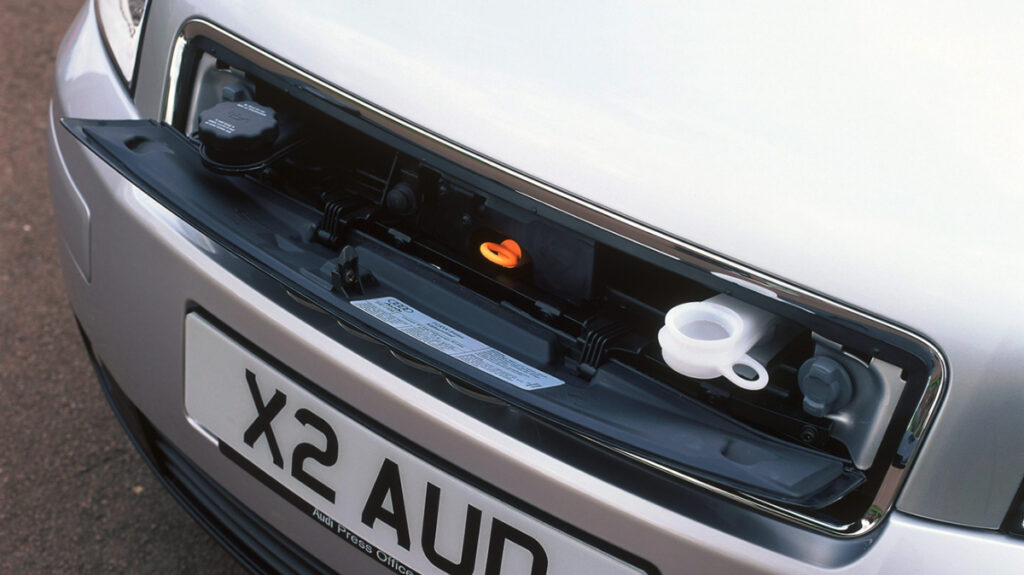
In the end, Audi got nowhere close to its 60,000-per-year limit at Neckarsulm, the final five-year tally of just over 176,000 equating to little more than half the plant’s capacity. The A2 then left a supermini-shaped hole in the Audi range, briefly explored with 2011’s unremarkable A2 concept, but ultimately filled in 2010 by the Polo-based A1 – essentially, Audi’s Mini.
And you knew we’d come back here, but 2010 also saw the launch of the Nissan Juke. While not the first compact crossover, its wild success paved the way for the industry to move away not just from clever monospace designs like the A2, but conventional superminis altogether.
Heavy, blunt, thirstier and often no more spacious than the cars they’re based on, they are the antithesis of the A2’s engineering-led approach. But they’re wildly popular, something the A2 never quite managed. The A2 wasn’t ahead of its time, because that time never came. But it was probably a better time.
Read more
Driving the modern Midget: Revisiting the Smart Roadster
Retro Rematch: Aston Martin V8 Vantage vs Audi R8 4.2
Review: The Ami city car is Citroën’s welcome return to stranger things



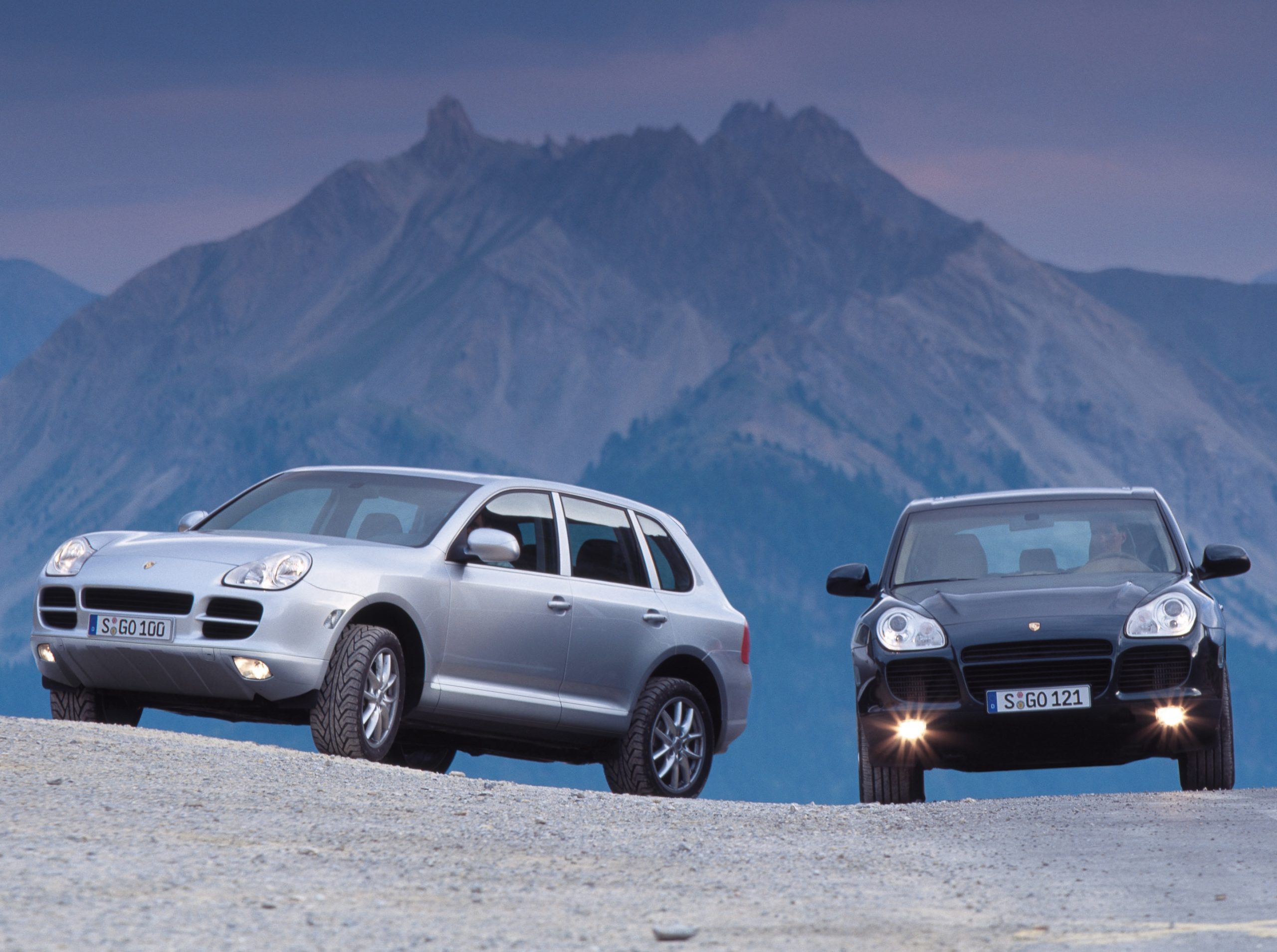






Mine has air conditioning. I think it was optional. It was also possible to get a diesel heater for cold climate.
I don’t think the diesel heater was a “heater” for you, just the engine..most tdi’s have them.. but it works out all the same. I wish all cars had the option to switch them to be a cabin heater! My Alhambra had one..that would have been fantastic.
Nevertheless, I’m glad I own a A2 it’s style and quirky looks still make you stand out from the rest, and still generates admiring glances from the flock.
Great cars, Mark. Some clever thinking went into their design, layout and construction. In much the same way as the original Mercedes A-Class and BMW i3, these things can be slow-burners but anyone that’s lived with one will sing their praises when it comes to efficiency and economy.
My 2001 1.4 SE petrol has air conditioning, leather seats, Audi Symphony sound system and a glass sun roof, in silver just like your photos.
With 32,000 miles after 23 years, it’s perfect for Bristol city and national ULEZ driving and the occasional trip to family in Lancashire. Average 38mpg.
A great car in 2023!